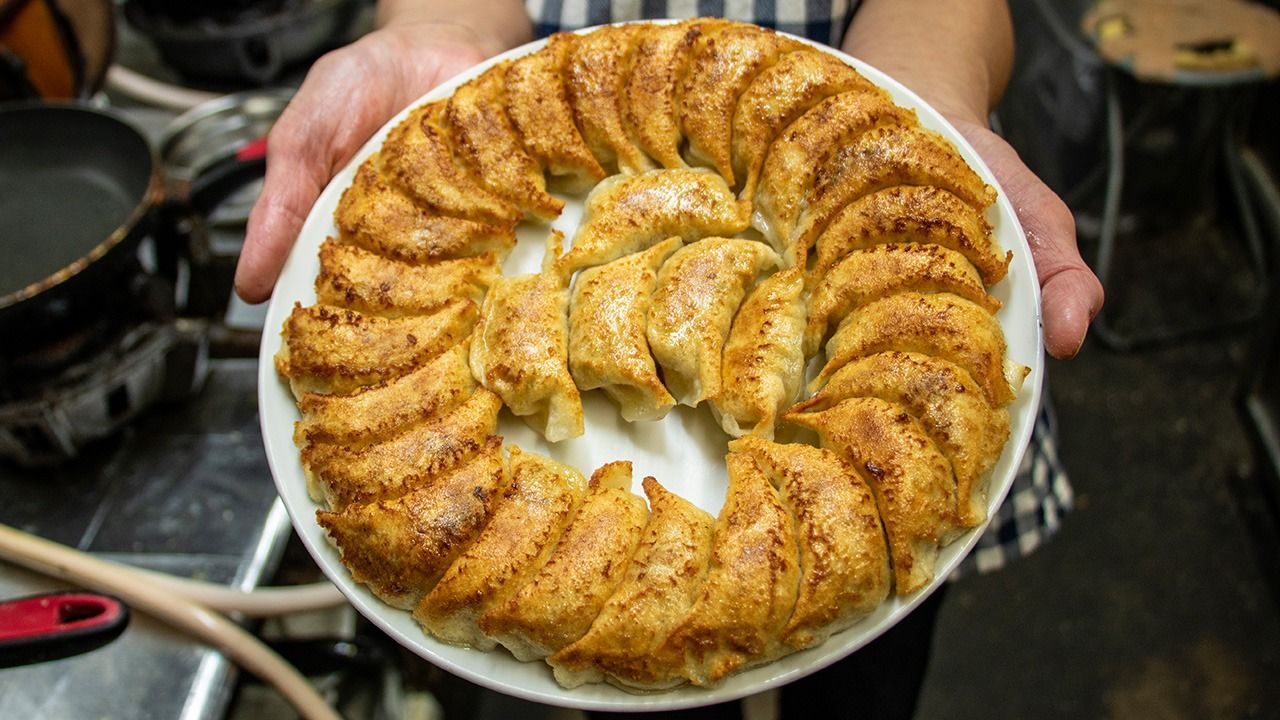
“Disk Gyōza”: A Fukushima Favorite for 70 Years
Guideto Japan
Food and Drink Lifestyle- English
- 日本語
- 简体字
- 繁體字
- Français
- Español
- العربية
- Русский
Authentic Flavor and Instagrammable Style
Crispy pan-fried gyōza are a Japanese culinary staple. Dipped in a savory mixture of soy sauce and spicy rāyu oil, they are delectable alone or enjoyed with a steaming bowl of fresh-cooked rice.
Originally a Chinese import, gyōza have adapted to the local palate. Diners can choose from varieties differing in size, fillings, and serving styles. There are also regional specialties like Utsunomiya Gyōza in Tochigi Prefecture and Hamamatsu Gyōza from Shizuoka Prefecture that draw foodies from near and far.
The prefectural capital city of Fukushima has developed a reputation for its enban gyōza, a disk-shaped version adapted directly from original Chinese potstickers. The local variation of the dish features 20 to 30 gyōza, fried extra crispy so they stick together. Arranged in a circle, the mouth-watering, browned dumplings create an eminently sharable sight for social media.
The city boasts several shops specializing in the dish, with hungry patrons often lining up outside in expectation of restaurants opening. Gyōza no Terui at JR Fukushima Station is one such location, drawing hordes of business travelers, office workers, and young people alike.
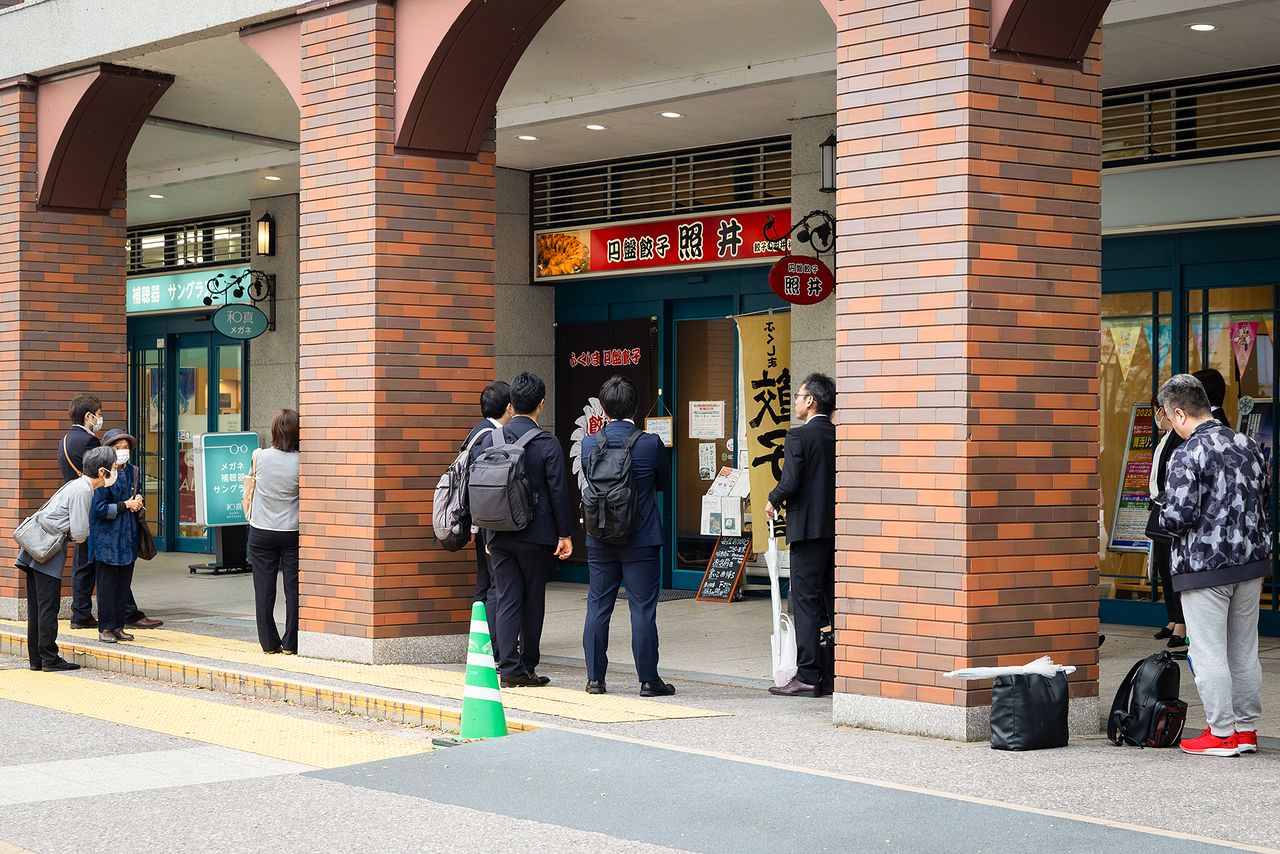
Gyōza no Terui at Fukushima Station is popular with lovers of gyōza. (© Nippon.com)
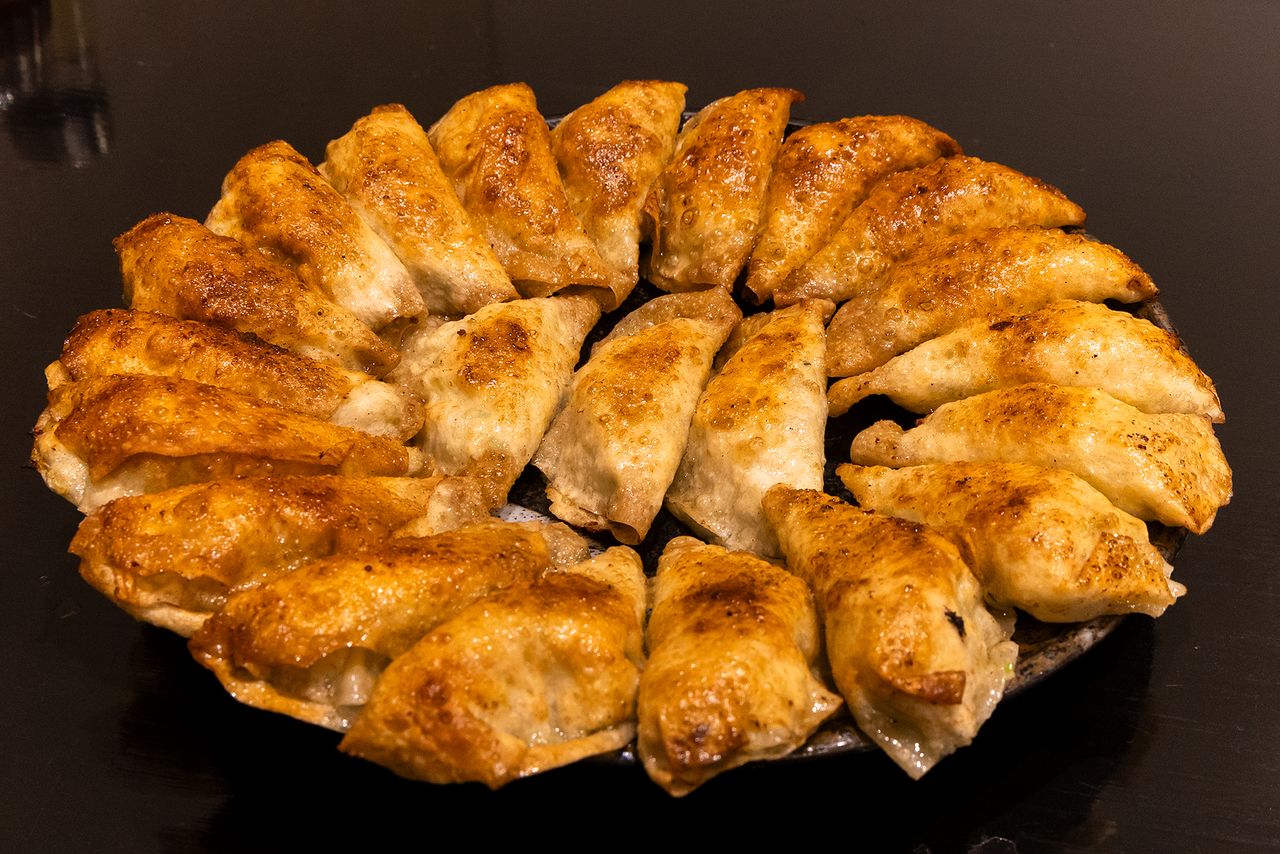
Terui’s pan-fried dumplings are crispy enough to be mistaken as deep-fried. (© Nippon.com)
A Shape Born from Need
The originator of enban gyōza is Manpuku, a shop near Fukushima Inari Shrine on the east side of the city. In 1953, Kanno Katsue struck on a novel way of serving dumplings when she opened a gyōza stall at the bustling black market that once stood near the shrine. During the food shortages of the postwar period, the filling dumplings won the hearts—and stomachs—of hungry locals. Two years later, Kanno opened a full-fledged gyōza restaurant.
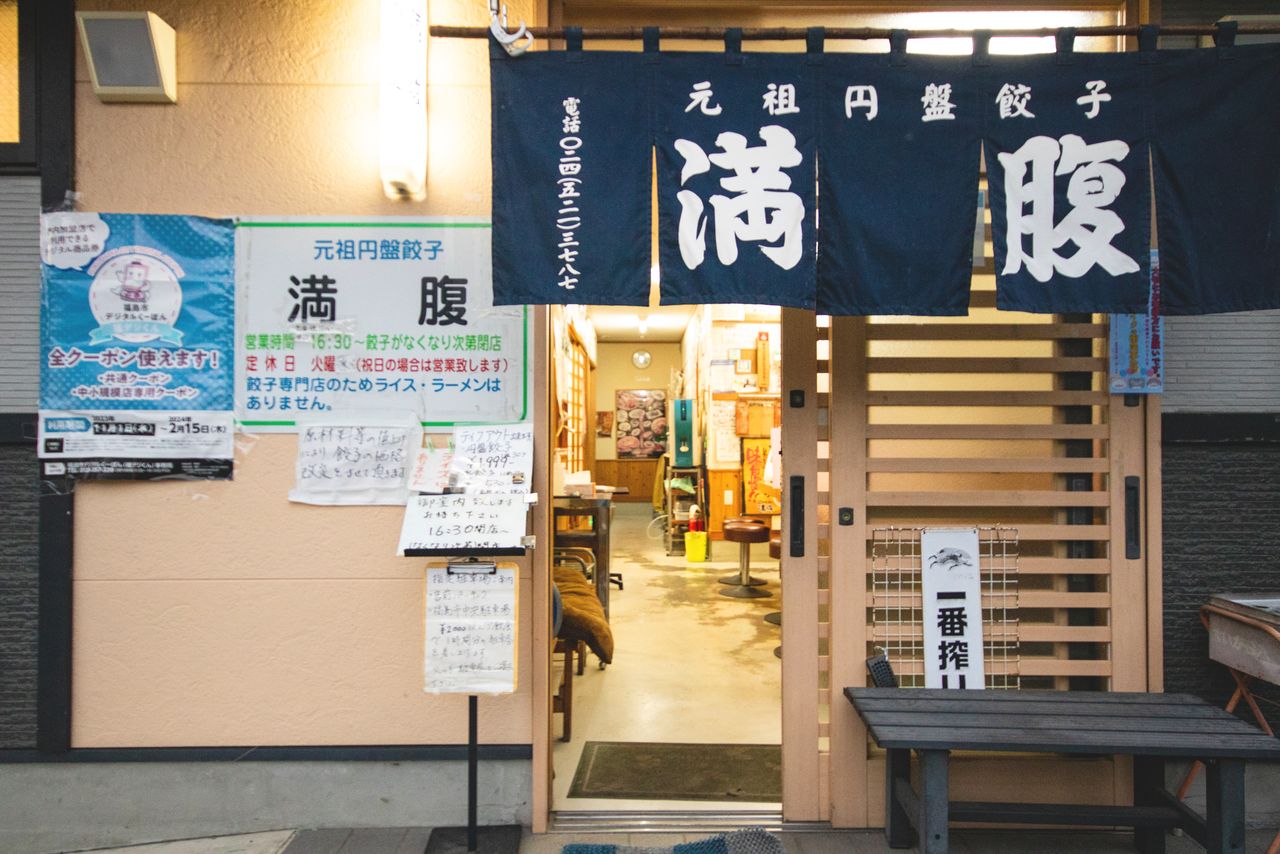
Manpuku stands in a quiet residential neighborhood that was once a bustling shopping district. (© Nippon.com)
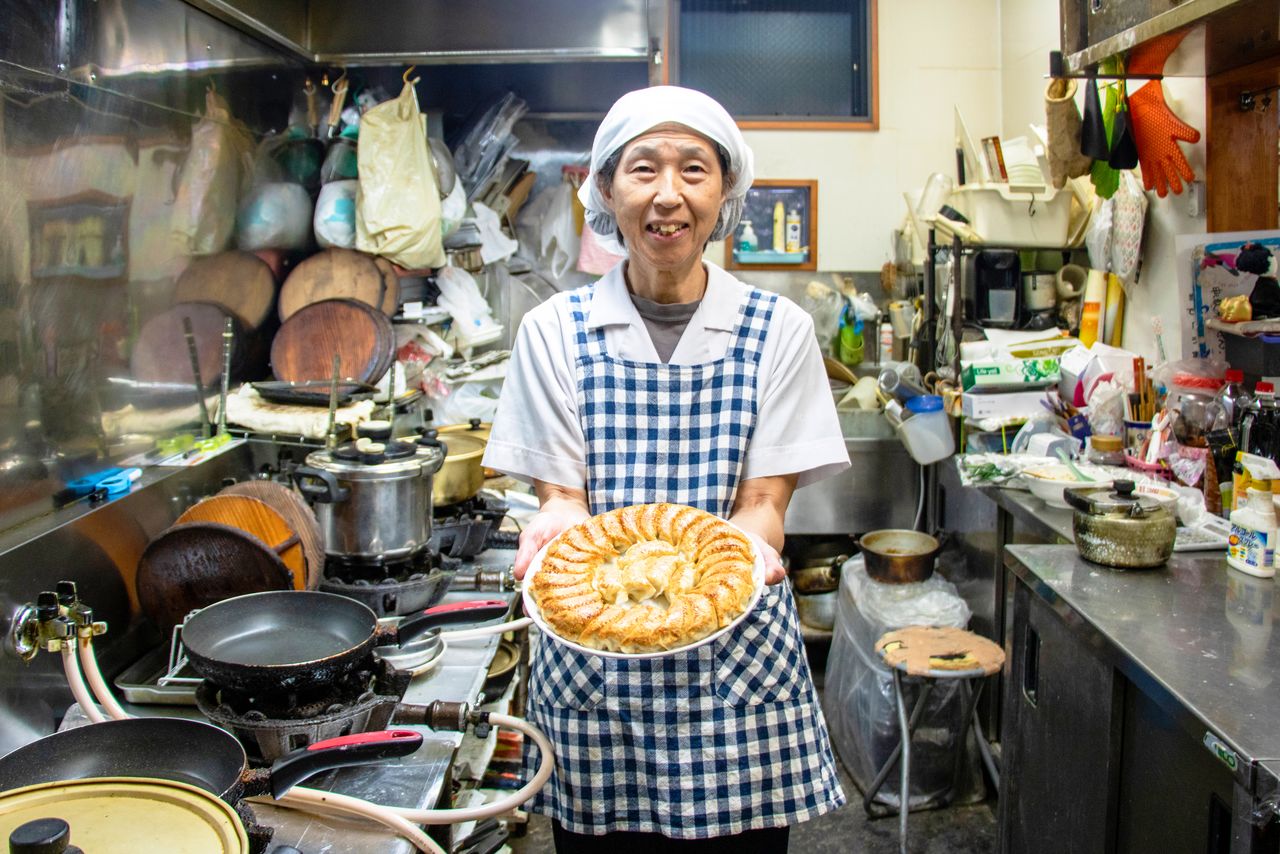
Shiino Jinko is in charge of frying up enban gyōza at Manpuku. (© Nippon.com)
Kanno first encountered gyōza in the prewar years, when she accompanied her railway-engineer husband to his posting in Japanese-held northeastern China. Boiled dumplings, called suigyōza in Japan, were a common dish, and it was usual to fry up leftovers for meals the next day. When Kanno returned home with her family following Japan’s defeat, she decided to make a job of selling pan-fried gyōza.
The city was full of people repatriated from China who were overjoyed at the nostalgic taste of the dumplings. Amid such abundant demand, gyōza shops sprang up around the city. As more and more emulated Kanno’s cooking style, enban gyōza spread.
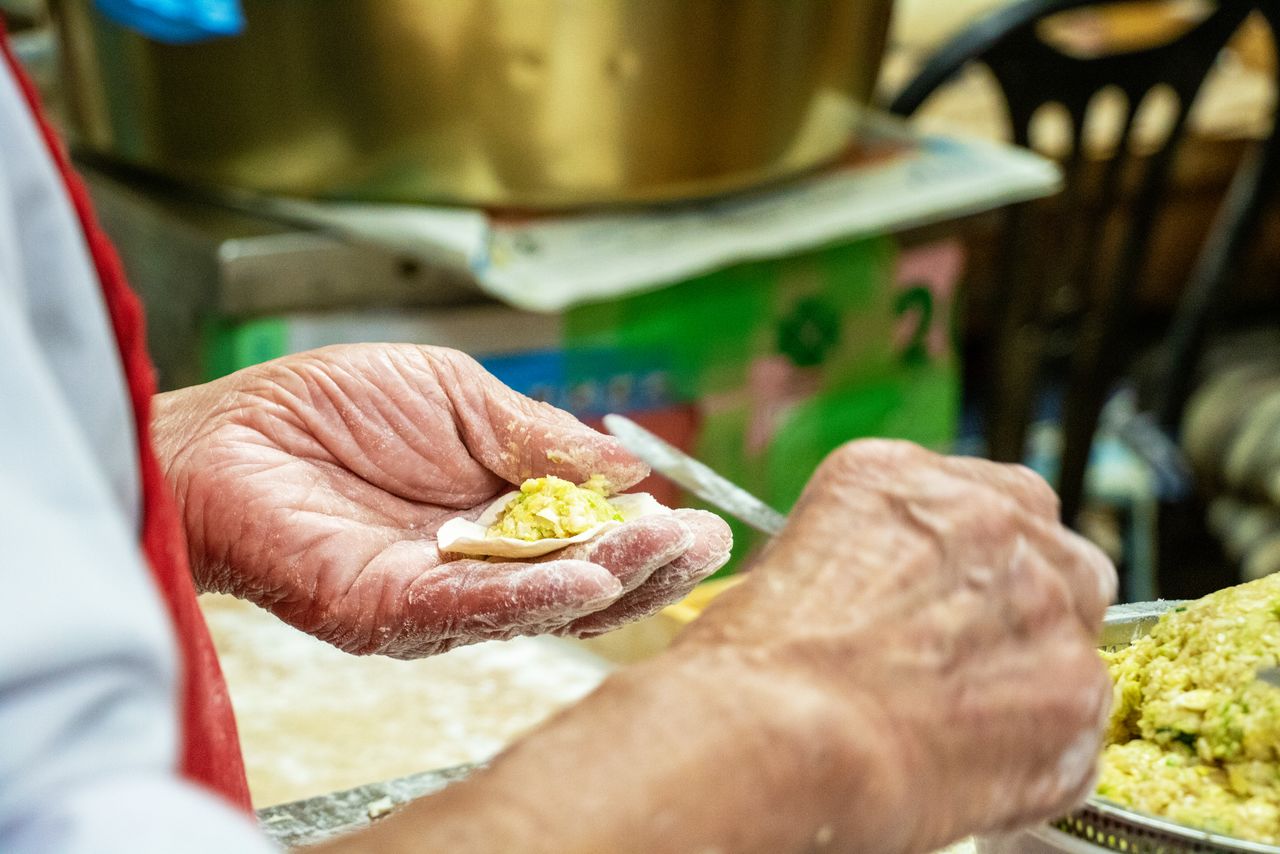
At Manpuku, dough for the wrappers is hand-kneaded and allowed to rest for two days, assuring extra chewiness. The simple filling consists of ground pork flavored with napa cabbage, Chinese chives, spring onions, garlic, and ginger. (© Nippon.com)
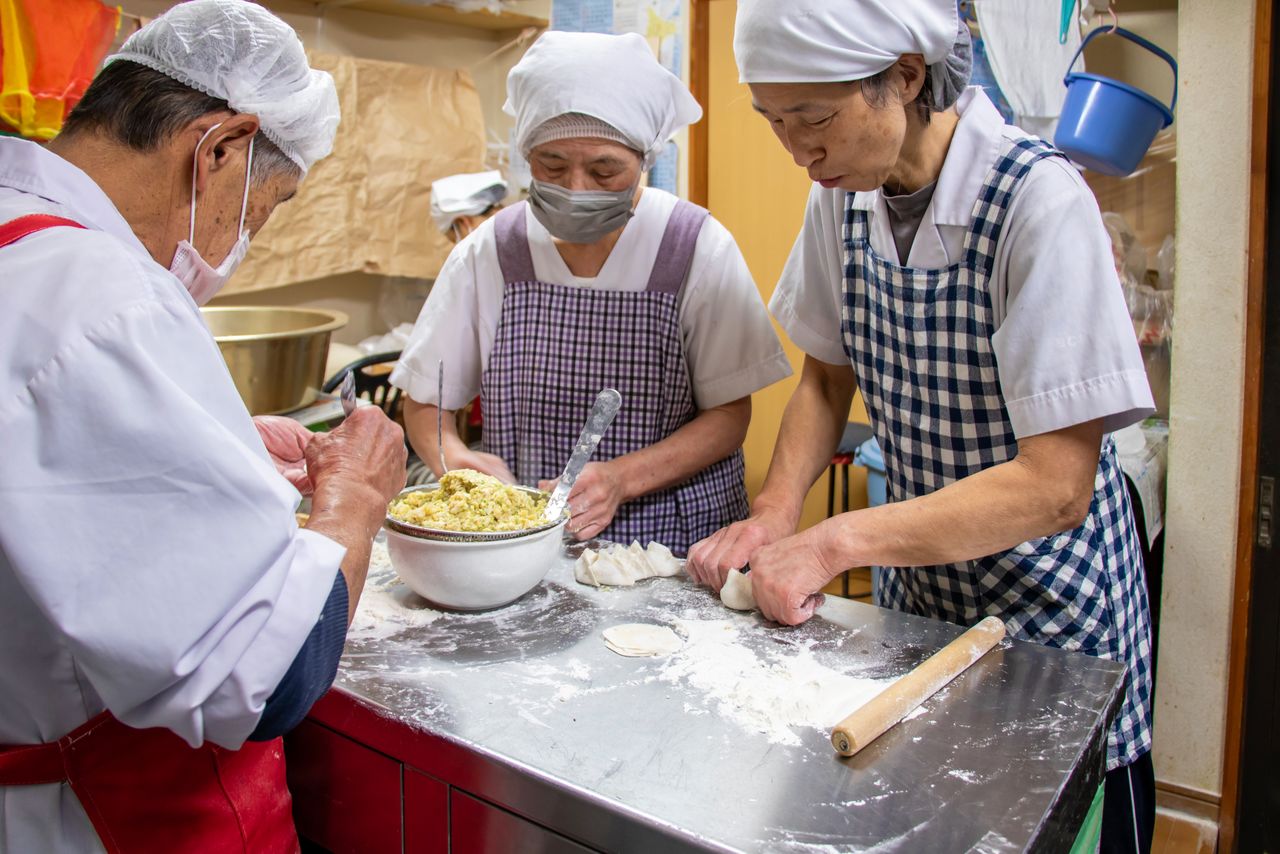
With some days seeing over 3,000 dumplings go out, wrapping work starts hours before doors open. (© Nippon.com)
Kanno passed in 2010 at the age of 103, and the shop is now run by her granddaughter Shiino Jinko, who has made sure to preserve the production techniques, down to the hand-made wrappers.
The circular shape arose from Kanno fitting as many dumplings as possible in a pan, which she cooked over a traditional, round charcoal grill called a shichirin. “A 26-centimeter frypan fits perfectly on a shichirin and holds exactly 30 gyōza,” Shiino declares. Demonstrating the frying style inherited from her grandmother, she skillfully arranges the dumplings—30 exactly—snuggly in the pan.
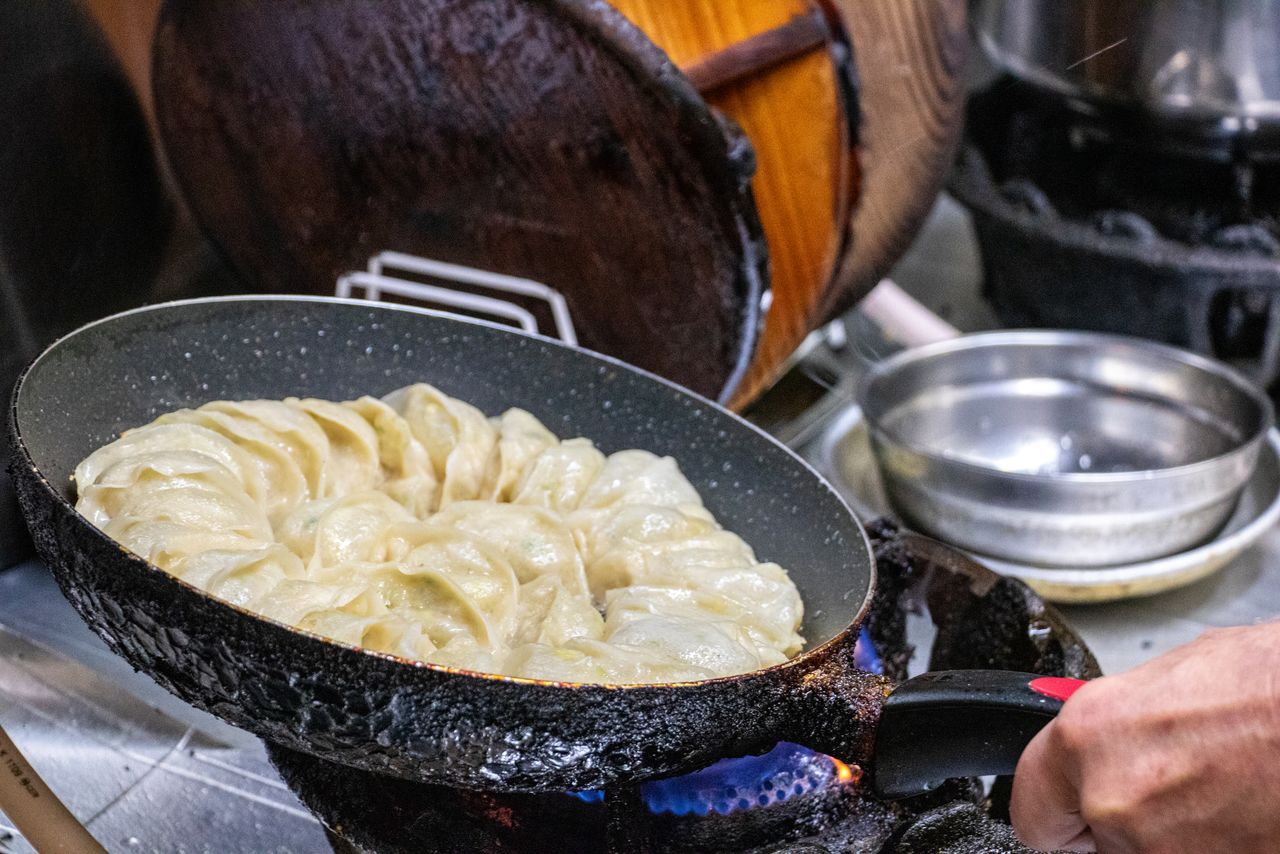
Manpuku’s style is to brown the gyōza, then drop the heat to low and steam the dumplings for about 10 minutes. (© Nippon.com)
Maintaining Authenticity
The finished gyōza have a crisp crust, while the opposite side remains soft and chewy. Though very filling, the dish is not excessively oily, and even petite customers frequently finish a full plate alone.
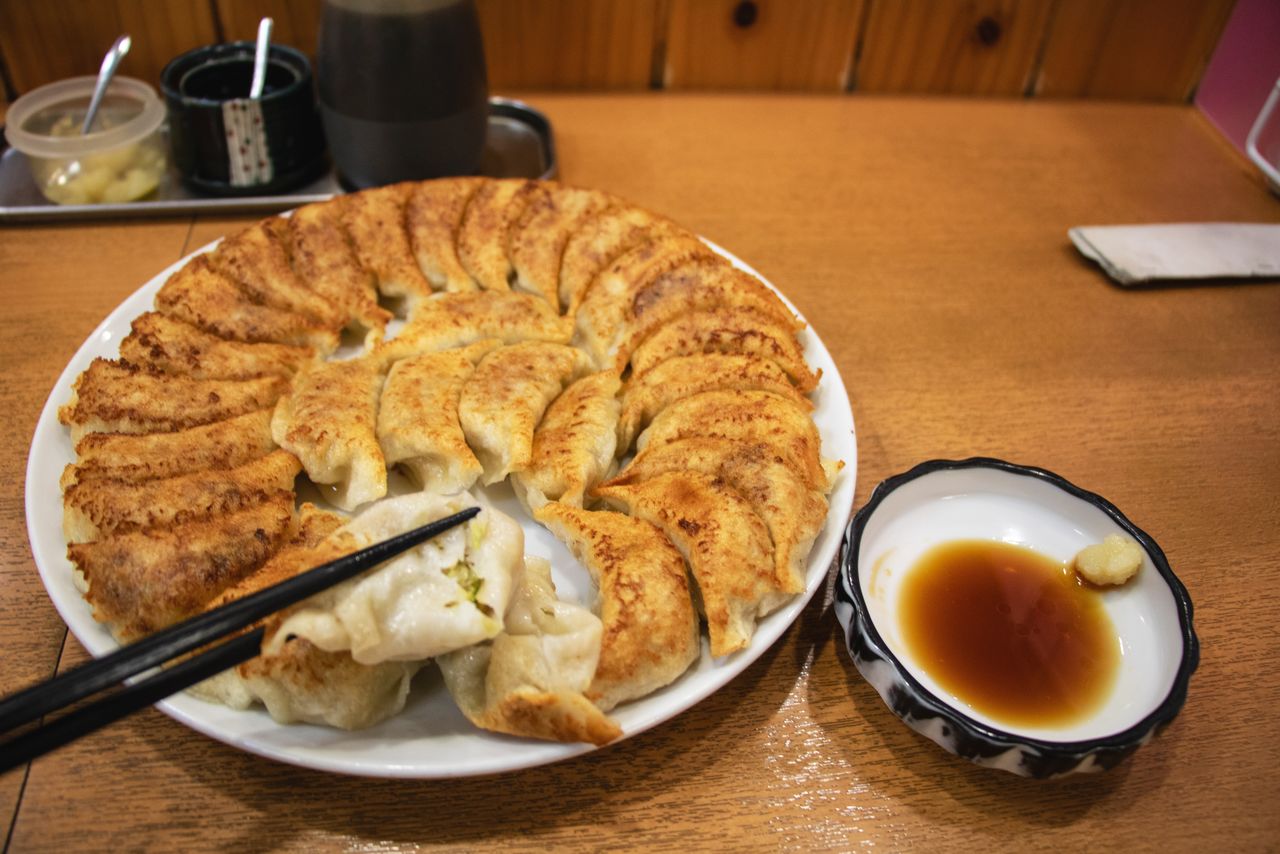
The shop’s special sauce is three parts vinegar, two parts soy sauce, and one part rāyu. Guests can add grated garlic to taste. (© Nippon.com)
Manpuku limits its food menu to enban gyōza, suigyōza, and a handful of side dishes, preferring an authentic style of eating dumplings. “My grandmother struggled to find enough to eat after the war,” Shiino explains. “The name Manpuku [full belly] reflects her hopes to satisfy customers’ hunger with a simple plate of gyōza, washed down with a few drinks.”
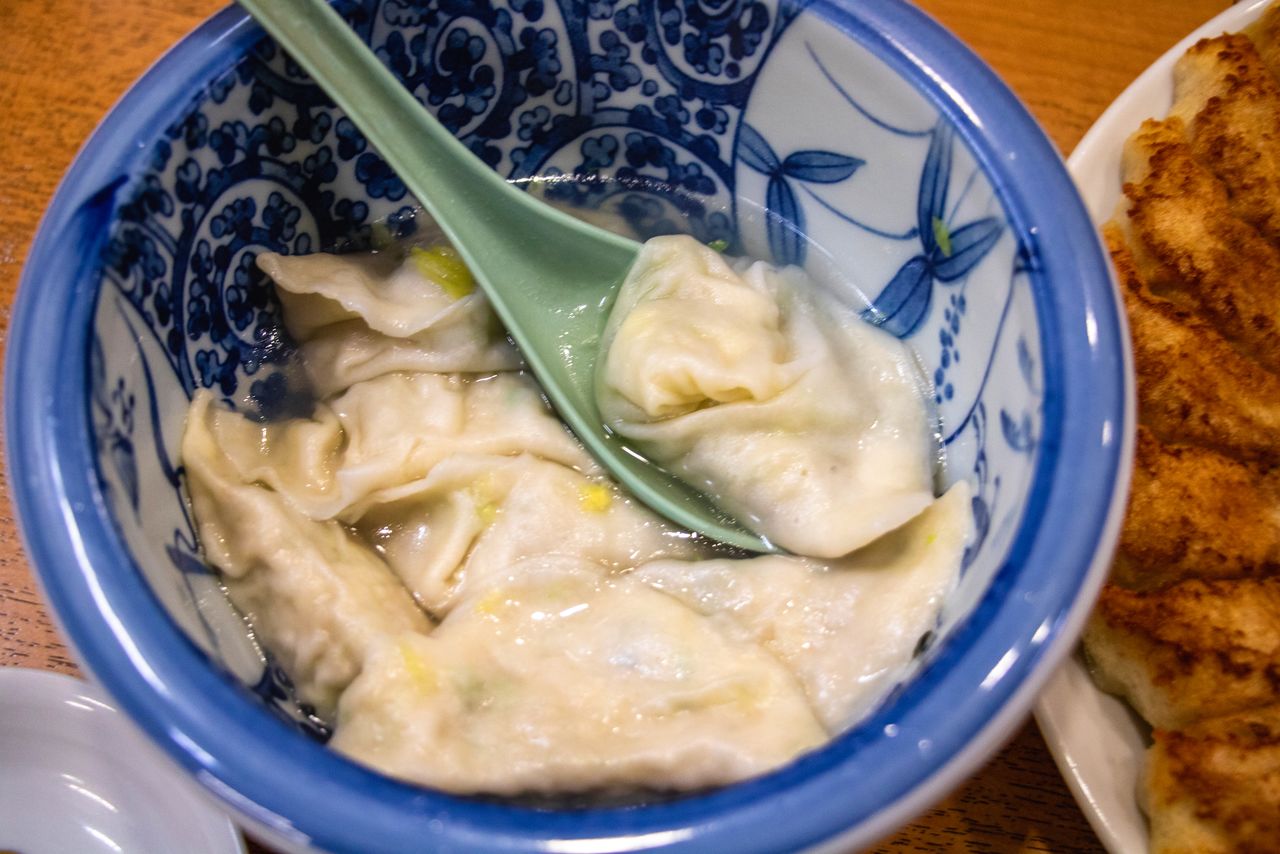
Suigyōza are a great way to enjoy the chewiness of the dumpling wrapping. (© Nippon.com)
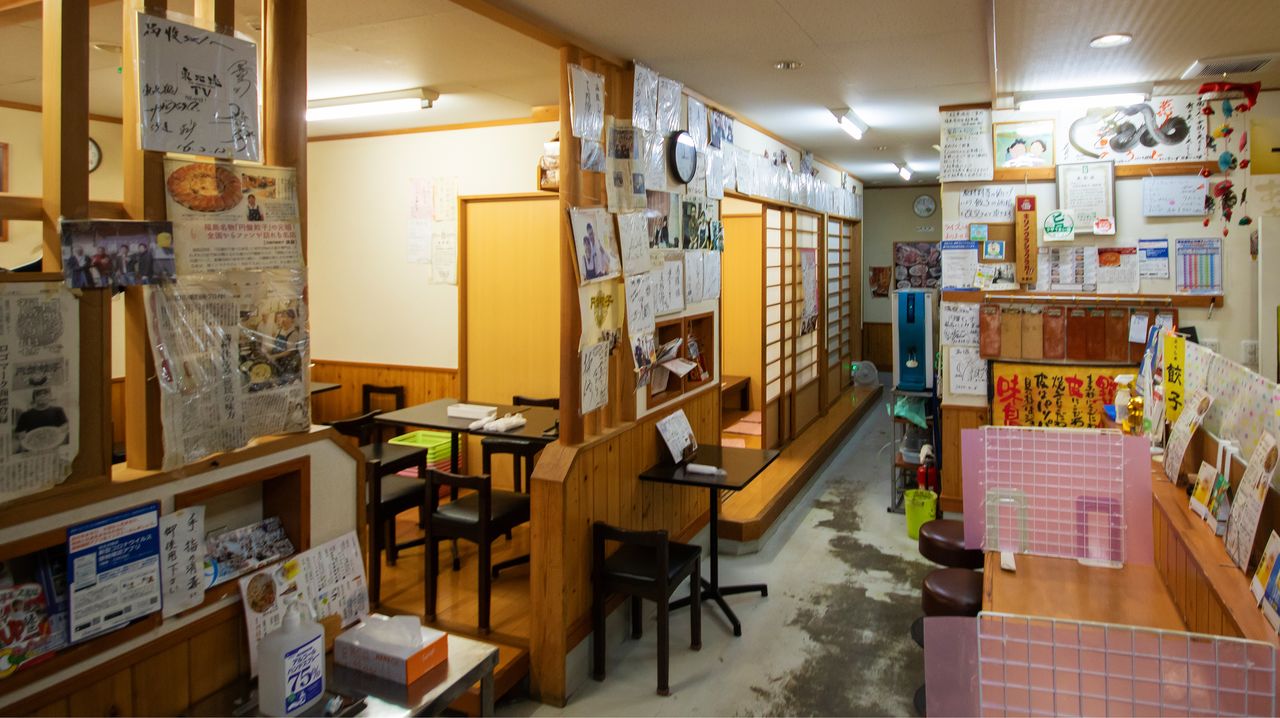
The interior of Manpuku. Messages from satisfied customers, including celebrities, line the walls. (© Nippon.com)
Promoting Enban Gyōza Further
Enban gyōza have become nationally known, but according to Tsukahara Hitoshi of the promotional organization Fukushima Gyōza Group, “The dish has taken on a life of its own outside the city, but its profile remains fairly subdued within the local community.”
A 2022 survey of annual gyōza expenditures per household showed Fukushima at ¥1,769, far behind the “big-three” gyōza centers of Miyazaki at ¥4,053, Utsunomiya at ¥3,763, and Hamamatsu at ¥3,434. Since the very beginning, enban gyōza has gone hand-in-hand with the local drinking culture, and many of the shops serving it are still evening-only businesses. Tsukahara says that while the group’s motto leverages the traditional connection between gyōza and drinking, “we also want more children to learn to love the dish.”
The group is promoting enban gyōza in the hope of building pride in the dish among locals and developing it into a community asset. Toward this end, the group has held different events, including frying up gyōza in giant frypans. Tsukahara also visits local elementary schools to talk to students about the dish’s history and how it is made. Through such dedicated efforts, enban gyōza may well become the next hottest foodie trend, winning fans across Japan and further afield.
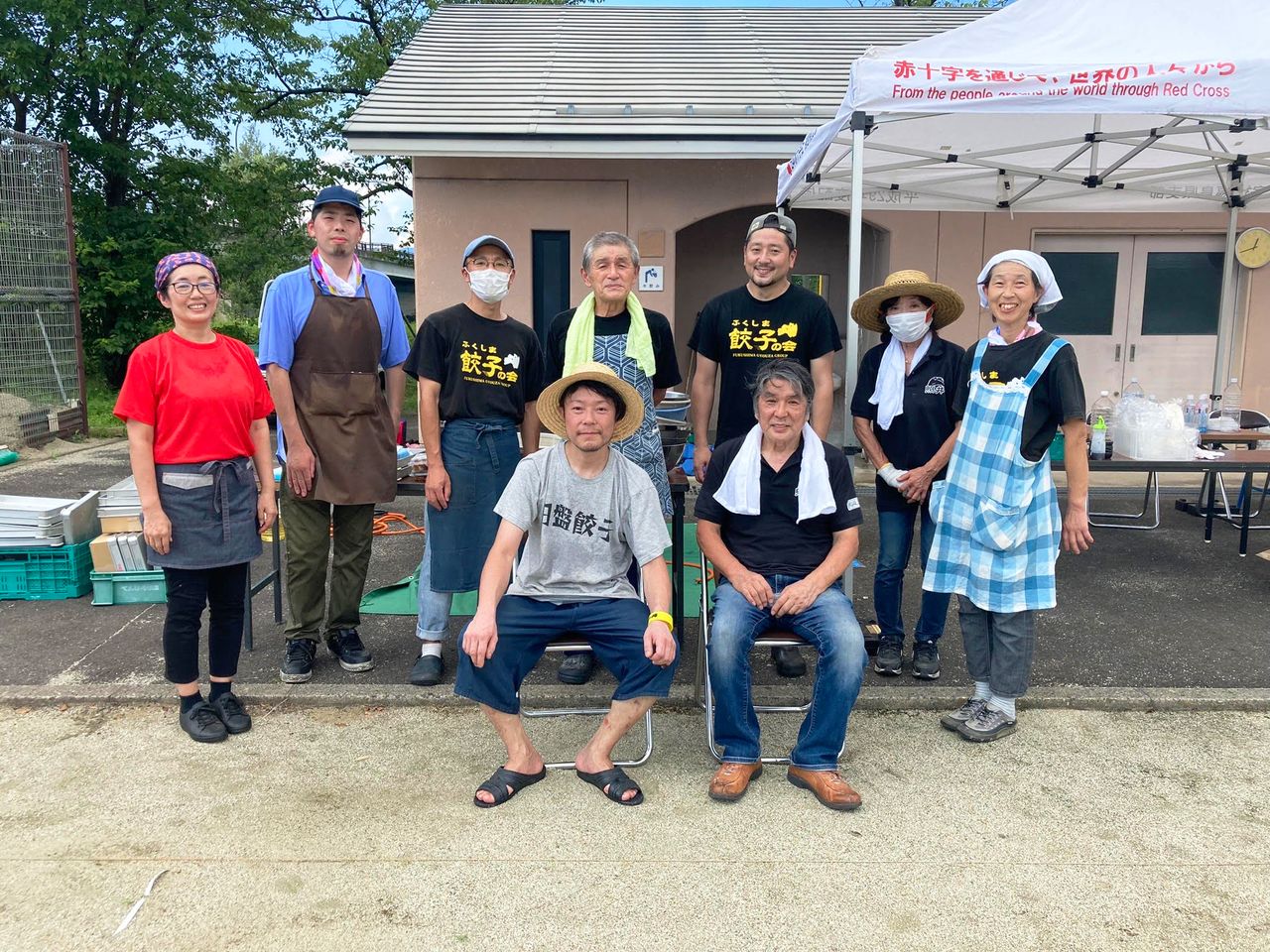
Tsukahara Hitoshi (front left), owner of Chinese restaurant Bokuten and chair of the Fukushima Gyōza Group, with fellow members at a promotional event. (© Fukushima Gyōza Group)
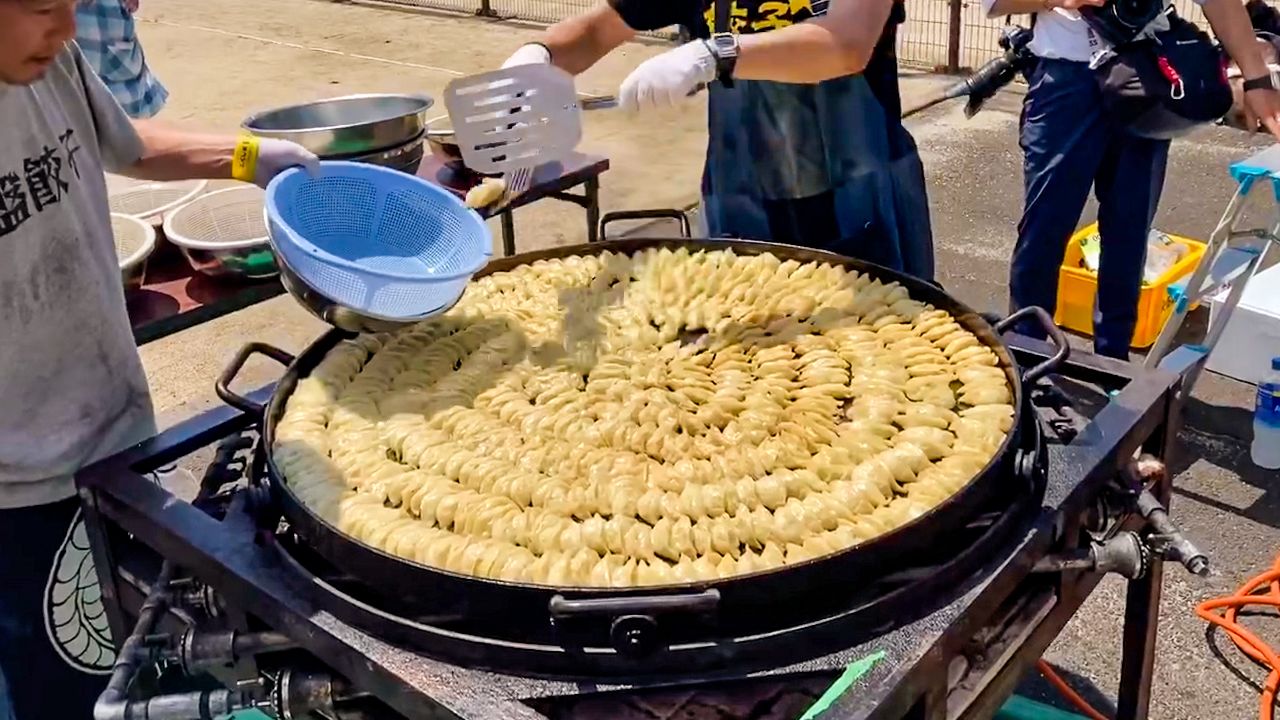
The group holds a variety of events, including a performance of frying up 700 gyōza at a time in giant frypans. (© Fukushima Gyōza Group)
(Originally published in Japanese. Reporting, text, and photos by Nippon.com, except where otherwise noted.)